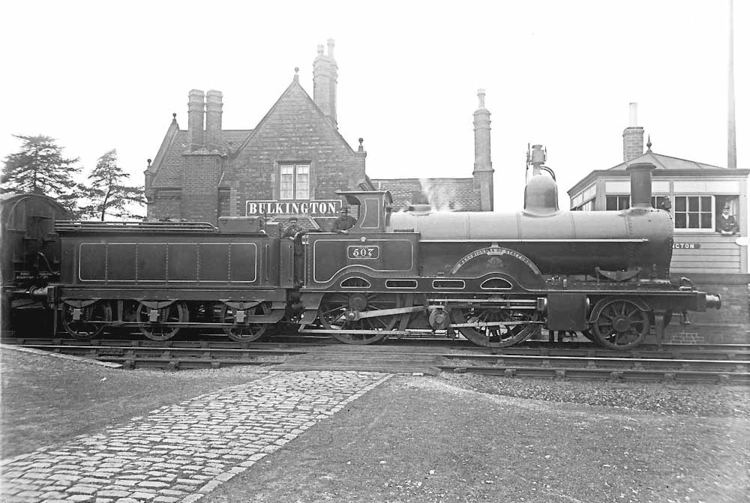Power type Steam Total produced 40 | Designer F. W. Webb Build date 1884–1888 | |
 | ||
Serial number 2975–2804, 2886–2905, 3012–3021 | ||
The LNWR Dreadnought class was a class of 40 passenger three-cylinder compound 2-2-2-0 locomotives designed by F. W. Webb for the London and North Western Railway, and manufactured by them in their Crewe Works between 1884 and 1888.
Contents
Design
The design featured a boiler pressed to 175 lbf/in2 (1.21 MPa) delivering saturated steam to two outside 14-inch (356 mm) high-pressure cylinders, which exhausted to one 30-inch (762 mm) low-pressure cylinder inside the frames. All three cylinders had a stroke of 24 inches (610 mm); the high-pressure cylinders drove the rear wheels, while the low-pressure drove the leading driving wheels. As the two pairs of driving wheels were not connected, the locomotives were "duplex drive" or "double-singles".
They were a development of Webb's Experiment class; they had larger boilers and smaller driving wheels, and while the Joy valve gear for the HP and LP cylinders could still be independently adjusted, it was now also possible to reverse both sets simultaneously. The inside valve gear was subsequently amended to the loose or slip-eccentric system, thus giving automatic reversal.
Decline
When George Whale become chief mechanical engineer of the LNWR in 1903, he started a programme of eliminating Webb's over-complicated duplex compound locomotives. Consequently, the class was scrapped between December 1903, and July 1905, having been replaced by Whale's Experiment class.
